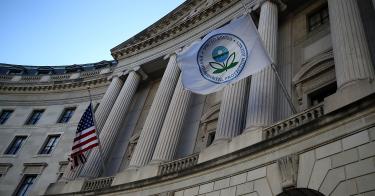The Environmental Protection Agency is trying to promote transparency by making it easier for Americans to see how it makes regulatory decisions.
Many on the left, however, are attacking those efforts. Two current examples highlight this campaign against open government.
First, there’s the EPA’s final cost-benefit rule under the Clean Air Act, which would require the preparation of a cost-benefit analysis for significant air pollution regulations.
Transparency is a primary component of the rule. It would require that information be provided to the public regarding how the agency conducted and used cost-benefit analysis in a rule-making.
Even this simple rule is under attack, and the truth isn’t going to get in the way of the left’s message.
Recent media reports have parroted leftist talking points, inaccurately asserting that the rule would prohibit or limit certain benefits, known as “co-benefits” or indirect benefits, from being considered in Clean Air Act regulations.
Actually, the final rule should have placed limits on the abuse of indirect benefits, but unfortunately, it didn’t do so.
Some context might help illuminate this resistance to the rule. To some leftists, if an air pollution rule does much more harm than good, that’s perfectly fine.
For example, the Obama administration’s EPA thought it was unnecessary to consider billions of dollars in costs when it issued its Mercury and Air Toxics Standards (MATS) rule. It didn’t even matter that the costs were as much as 2,400 times greater than its benefits.
Fortunately, the U.S. Supreme Court in Michigan v. EPA held that the agency did need to consider the costs of the MATS rule. The left will try to limit the reach of that case and quash any efforts that require the consideration of both costs and benefits, and any related transparency efforts.
Anything that could prevent the agency from doing whatever it wants is deemed a threat.
The second example deals with the EPA’s science transparency rule, which hopefully will be finalized this month.
The left loves to talk about the importance of science, often slamming conservatives for supposedly ignoring it. Yet, the left doesn’t care about science so much as “science” that supports its causes. The left’s opposition to the science transparency rule is “Exhibit A.”
The EPA has been working on ensuring that the public (including experts) can properly evaluate the scientific studies being used by the agency to support regulations. There has been long-standing, bipartisan concern about the adequacy of the science used by agencies.
President Barack Obama stated in a 2009 memorandum about scientific integrity across the government: “The public must be able to trust the science and scientific process informing public policy decisions.”
Yet, when the Trump administration’s EPA tries to increase the public trust by improving the science used in rule-making and disseminated by the agency, the left goes on the attack.
In limited circumstances, there may be some legitimate concerns regarding privacy and related issues connected to making underlying data and models available from studies. But the solution is to address this narrow problem, not to use this narrow problem as a pretext to block the public from being able to assess the science.
The EPA has made it consistently clear throughout the rule-making process that nothing in the rule would violate privacy, confidentiality, and confidential business information protections.
The left’s likely talking point, regardless of whether it will be true regarding the final science transparency rule, will assert the rule allows the agency to ignore some scientific studies. Agencies, however, ignore studies all the time based on an evaluation of their merits.
If someone writes a report drawing “scientific” conclusions, but has no support for the conclusions, should the EPA use the report anyway? Of course not.
As it is, the EPA’s final rule might not impose any requirements on the agency that would require it to exclude studies. If that’s the case, it would be unfortunate.
In the rare situation when underlying data and models can’t be made publicly available in some fashion due to genuine concerns, the agency should, at a minimum, place less weight on those studies. But in instances where there’s no genuine basis for not providing the necessary underlying information, the agency should exclude those studies.
Getting rid of junk science and relying only on sound science might not appeal to some on the left, but for everyone else, it’s a must.
Right now, some on the left are opposing efforts to promote transparency and to increase the credibility of the science used by the EPA. That’s the real story that should be getting reported.
This piece originally appeared in The Daily Signal



